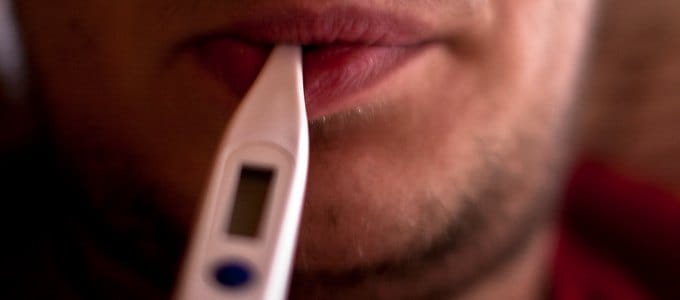Like many companies facing massive disruption as COVID-19 spreads across the world, Hoffer Plastics Corp. had to make hard decisions.
Among the tough choices was fulfilling its customers’ needs while simultaneously protecting the health and welfare of its employees. As a global supplier of custom injected plastic parts used in everything from baby food pouches to lawnmowers, deadlines still had to be met despite the growing pandemic.
Most of the company’s 350 employees were working in three shifts at Hoffer’s 360,000-square-foot plant in the Chicago suburb of South Elgin. They couldn’t simply tuck a laptop under their arm and manufacture blender parts or speaker covers from their dining room table. They had to clock in every day as COVID-19 spread, seeking direction and support from company leaders.
Also read: Cut hours of admin work each week and automate how your staff clocks in and out.
Hoffer’s executive team acted quickly to calm workers’ anxieties by relying on an enduring “family first” philosophy that has served the company from its humble beginnings in 1953 to an internationally recognized, award-winning plastics manufacturer today.
Employees are part of the family
As a family-owned and operated company, Hoffer’s leadership has consistently applied family values to its operations. And its employees, most of whom are hourly, are considered to be an extension of the Hoffer family.
The company is now led by second-generation family member William Hoffer along with his children, known as the “G-3” (for third generation) in executive leadership roles. Daughter Charlotte Hoffer Canning is Hoffer Plastics’ chief culture officer and has been instrumental in leading the organization through the pandemic.
“I may be biased but family was our advantage in these last six months,” said Hoffer Canning, the granddaughter of founders Bob and Helen Hoffer. “Our first core value is family, and family chooses one another over everything else. The focus of our decisions was on the safety and well-being of our people.”
Protecting jobs
As company leaders, Hoffer Canning added that their primary duty was to look after the welfare of their employees.
 “The most important thing for us was to remain clear that it was our job to protect people over profits, and remain visible and transparent about the decisions we were making,” she said. “We were all navigating the unknown, but we were on the same page that we wanted to keep people employed.”
“The most important thing for us was to remain clear that it was our job to protect people over profits, and remain visible and transparent about the decisions we were making,” she said. “We were all navigating the unknown, but we were on the same page that we wanted to keep people employed.”
In the early days of the pandemic Hoffer executives met consistently to establish their approach to addressing employee concerns and keeping the business operational. As chief culture officer, Hoffer Canning was keenly aware of employee morale.
“Aside from communicating regularly, often two or three times a week, we made sure to lead our teams with empathy, recognizing that everyone is in very different places with how they are experiencing and responding to the pandemic,” Hoffer Canning recalled.
Listen, learn and lead
Simply listening to their employees was among the most important factors considering that each of them had their own perspectives regarding COVID-19, Hoffer Canning said.
“We knew that we had to understand that everyone was having very different experiences in their lives,” she said. “Our first choice was to listen closely, be supportive and empathic in places we could be. We checked in, held listening sessions and added a corporate chaplain to visit with our people. Our attitude was that we could get through it together.”
Case study: Building a safety policy was vital to Shawmut Design and Construction’s health
Considering all the challenges that accompany social distancing and employee safety in a manufacturing plant, the design of Hoffer’s sprawling 24-acre facility became an advantage as leaders reconfigured the building’s layout.
“We have a mature facility, and our building is segmented into focused factories, which has been viewed at times as a disadvantage in manufacturing today,” Hoffer Canning said. “Over the past few months, it has actually been an advantage and assisted greatly with many regards to maintaining proper social distancing. The only place we struggled with social distancing were the break rooms but we now have plexiglass barriers on our tables to maintain a safe environment for eating as well as break times.”
Keeping three shifts operational
Despite the potential roadblocks COVID-19 presents in a large manufacturing facility, Hoffer has maintained its pre-pandemic pace.
“We run three shifts and have run three shifts all the way through COVID-19, of course with new protocols in place,” Hoffer Canning said. “Because we follow good manufacturing practices very closely, our workforce was already used to following safety and health guidelines.”
Unlike many manufacturers that have been forced into layoffs, Hoffer is hiring.
“We are finding great candidates to join our team,” Hoffer Canning said. “Some of the positions require more experience than others, but our main focus is on hiring for ‘humble, hungry and smart.’ We will give you the tools, train you and from there, it’s up to you to work your way up.”
Whether you have a staff of 10 or 10,000 employees, building schedules is easier and faster with Workforce.com’s scheduling software platform. See employees’ availability as you go, be on top of wage costs and customize the way you manage attendance based on your unique requirements.











